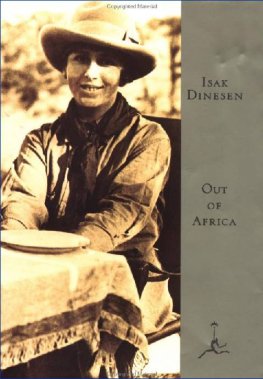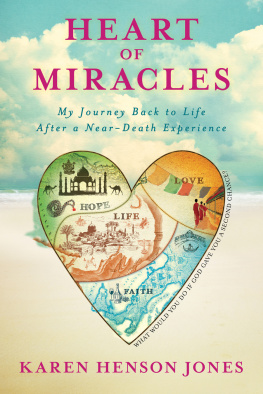
Scribner
An Imprint of Simon & Schuster, Inc.
1230 Avenue of the Americas
New York, NY 10020
www.SimonandSchuster.com
The timing of some events in addition to certain names and characteristics have been changed.
Copyright 2018 by Karen Auvinen
All rights reserved, including the right to reproduce this book or portions thereof in any form whatsoever. For information, address Scribner Subsidiary Rights Department, 1230 Avenue of the Americas, New York, NY 10020.
First Scribner hardcover edition June 2018
SCRIBNER and design are registered trademarks of The Gale Group, Inc., used under license by Simon & Schuster, Inc., the publisher of this work.
For information about special discounts for bulk purchases, please contact Simon & Schuster Special Sales at 1-866-506-1949 or .
The Simon & Schuster Speakers Bureau can bring authors to your live event. For more information or to book an event, contact the Simon & Schuster Speakers Bureau at 1-866-248-3049 or visit our website at www.simonspeakers.com.
Interior design by Kyle Kabel Watercolor illustrations by Greg Marquez (artquez.com)
Cover design by Jaya Miceli
Cover artwork: Fox Face, Thompson-Engels, Sarah/Bridgeman Images
Library of Congress Cataloging-in-Publication Data is available.
ISBN 978-1-5011- 5228-3
ISBN 978-1-5011-5230-6 (ebook)
Excerpt from When One Has Lived a Long Time Alone by Galway Kinnell, copyright 1990 by Galway Kinnell. Used by permission of Alfred A. Knopf, an imprint of the Knopf Doubleday Publishing Group, a division of Penguin Random House LLC. All rights reserved.
For my mother, Susan, who did not have a voice, and for Greg, who helped me find mine
and one knows,
after a long time of solitude, after the many steps taken
away from ones kind, toward the kingdom of strangers,
the hard prayer inside ones own singing
is to come back, if one can, to ones own,
a world almost lost, in the exile that deepens,
when one has lived a long time alone.
Galway Kinnell
Prologue
The Hard Prayer
M arch was thick with anticipationthe pendulum between winter and spring, between dormancy and growththe month of hope, the month of change. Its arrival meant winter was certain to end. By then, Id had nearly four and a half months of cold and isolation. And although I loved the quietdays that were meditative and curving, nights that were icy and full of dreaming, and the kind of luxurious deep sleep that comes when youre wrapped in layers of blanket and downthat didnt mean it was easy. Snow fell a foot at a time. Silence was a presence; sometimes my own voice broke the stillness like a body crashing through ice. The snap and plunge startled me. And then there was the winter wind, the yang to the yin of snow, which howled and clawed at the cabin, rattling the glass panes like a live thing. Inside such a landscape, you learn to stay put.
By March, I was ready to emerge.
Driving home that morning, I glanced up through the slender bodies of lodgepole pine, a silhouette of trees against an impossibly blue Colorado sky. A few crows trailed the hillside, scouting for trouble. The birds reminded me of packs of teenage boysloud and rowdy and full of themselves. It was early still, perhaps 10:00 A.M. , and chilly, the first day of March. Id built a fire in the woodstove of my cabin, where nighttime temperatures inside dipped into the low fifties, and sauted chopped celery and onion for corn chowder before Id gone out to deliver mail on a rural route, one of three part-time jobs. Elvis, a handsome blond husky mix and my constant companion, sat in the seat of the old blue 4Runner next to me, nosing the cold mountain air through a crack in the window.
I was thinking about spring, the change of season. Despite years of mountain living and the fact that I should have known better, my whole body buzzed with thoughts of warmer, longer days, hummingbirds whirring at my deck, the smell of rich dirt rising from the softening earth. The first real glimpse of springpasque flowers shocking the russet landscape with pale purplewould not come for another six weeks, but I allowed myself to be hypnotized by the sensation of thaw. I could feel it in the stiffness of muscles and limbs, the paleness of my skin. My body was ripe for release. In just a few weeks, Id head out for the equinox in Utah to celebrate the return of sun and let my winter self unknot and loosen her grip.
This winter had been full of firsts: Id finally settled into a home after too many awkward years of moving from place to place; Id finished the last of three college degrees; and I was gloriously alone, without the economic necessity and relative instability of housemates. I had only myself to annoy or answer to. After over a decade of the roller coaster of odd jobs and school, Id come to rest at last. Here, I told myself, was where I would begin. In settling down for the first time in my life, my commitment was not to a person but to a place. Forgoing the possibility of job offers in other states or the economic comfort of a nine-to-five life, I placed my bet on landscape, putting all my chips on wildness.
Id landed on one of the highest habitable places on the apron of the Front Range of the Rockies that still offered Internet access and a reasonable (fifty-minute) commute to the nearest city (Boulder). The Bar-K cabin stood at 8,500 feet, where the winters were long and the summers brief, but glorious. There were a handful of neighbors spread across the mountain, most settled on one- to two-acre lots kept private by uneven terrain dotted by lodgepole, kinnikinnick, and currant bushes. Another few hundred people lived in Jamestown, four miles down-canyon, where Id lived for a few years when Id first gotten Elvis and now cooked at the Mercantile Cafe, the towns one and only business. I wasnt living in the wilds of Alaska, but the relative isolation and solitude of living up top suited both me and my semiferal dog, who behaved far better without fenced yards and leashed walks. We were both a bit untamable. I had an instinctive need for distance and space. Like the grizzly bear, an animal that once inhabited the Great Plains of Colorado, I needed room. Plus, Ill take the overblown perils of living with bear and mountain lion over the more menacing threat of people any day, the quiet and loneliness of mountain living over the noise and stimulation indigenous to the modern world.
Through the fall and winter, Id been putting down roots. I was drunk on the idea of autonomy and quiet living, not to mention at long last being able to make a home exactly how I wanted it. I bought chunky Mexican wood chairs for the living room and invited friends for tequila shrimp or Thai curry. I shelved my books according to type and genre. There was a meditation space in the long narrow bedroom and a place to do yoga. I even wintered my first herbstricky on my shady patch of dark pine forestand began planning a lettuce garden for the deck in summer. I fed the birds, throwing out seed for juncos, and hanging long slender tubes for chickadees and woodpeckers, birds who were bullied by Stellers jays and camp robbers (gray jays), not to mention one determined gray squirrel, who chattered angrily at everyone. Mornings, I sipped coffee and watched the shifting hierarchy while I wrote and Elvis studied the squirrel through the sliding glass window, his ears up and head cocked to the side.











